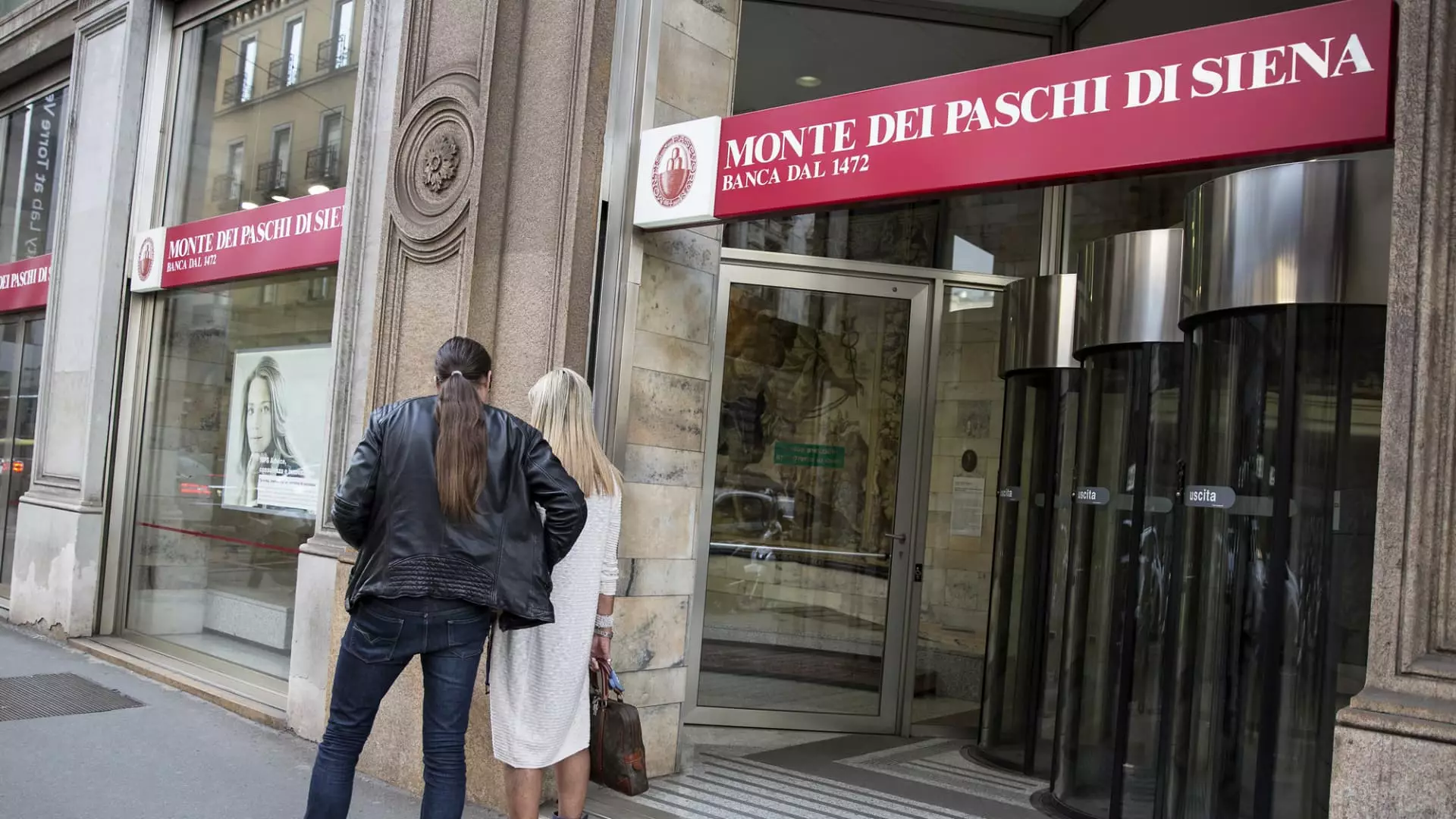Monte dei Paschi di Siena, celebrated as the oldest operating bank in the world, is undoubtedly living through a tumultuous chapter in its long history. The bank’s audacious bid to acquire Mediobanca for approximately €13 billion has raised eyebrows across the financial landscape. While Monte dei Paschi’s CEO, Luigi Lovaglio, expresses an unwavering confidence in the deal’s potential despite the prevailing turbulence in the market, the harsh realities hint that this acquisition might be a precarious gamble rather than a strategic masterstroke.
Skewed perceptions of historical prestige can beguile stakeholders into underestimating substantive financial prudence. Monte dei Paschi, having survived government bailouts in recent years, must tread carefully. The bravado of managing a consolidation in such a competitive landscape might just be a mirage – one that could ultimately erode the very legacy it seeks to uphold.
Market Conditions: A Dangerous Mix
Lovaglio’s assertion that current market turbulence only reinforces the notion that “size matters” comes across as dangerously optimistic. Recent market volatility has prompted several firms to freeze expansion plans, highlighting the precarious nature of such an environment. For instance, private equity firms and tech companies alike are steering clear of significant transactions, indicating an increasing anxiety about impending financial repercussions.
In this context, Lovaglio’s belief that stability can be achieved by swallowing a rival seems naive. The reality is that Mediobanca’s rejection of the offer as “destructive” adds another layer of complexity that cannot be ignored. Combined entities have not always delivered anticipated synergies, and analysts expressing skepticism could well be voicing the fears of many seasoned industry players.
A Fragile Relationship
The relationship between Monte dei Paschi and Mediobanca is fraught with complexities beyond mere numbers and balance sheets. When a deal is dismissed as “devoid of rationale,” as Mediobanca has asserted, it raises pressing questions about the strategic thinking driving this merger.
While Lovaglio envisions a future where the combined entity would be stronger, history paints a different picture. Past attempts at acquisitions often revealed that differing operational philosophies and core competencies can lead to value destruction rather than creation. Simply put, at what cost would Monte dei Paschi’s ambition of becoming a “protagonist” in the Italian banking scene manifest? Engulfing Mediobanca might not only dilute Monte dei Paschi’s already fragile market standing but could also provoke unrest among stakeholders if they feel misled.
Investor Sentiment: A Hurdle to Overcome
Investor reactions in the wake of Monte dei Paschi’s intentions narrate a sobering truth: confidence is wavering. Since the acquisition bid announcement on January 24, shares of Mediobanca have experienced a staggering 14% decline. For an institution seeking to regain its footing post-bailout, this trajectory signifies a troubling disconnect with market sentiment.
When major investment banks like Barclays lower their price targets, a resounding message emerges: doubts abound regarding attainable synergies and long-term viability. Lovaglio’s noncommittal stance about sweetening the deal for Mediobanca shareholders encapsulates the skepticism prevalent in the market. If the pockets of negotiation run dry and investor confidence wanes, the initiative might face insurmountable stumbling blocks before it even materializes.
Consolidation or Isolation?
In a climate of banking consolidation, why does Monte dei Paschi’s bid stand apart as a potential misstep? Previous attempts by competitors, such as UniCredit’s aggressive maneuvers, are symptomatic of an industry seeking stability through mergers. However, one must ask: is Monte dei Paschi really equipped to become a trailblazer in this process?
Lovaglio appears to envision a future where consolidation is inevitable, yet he risks conflating ambition with capability. This is a moment of strategic crossroads, and it remains uncertain whether formulating a larger financial powerhouse is the necessary remedy for the struggles facing Monte dei Paschi. Trust in institutional stability is crumbling, and a misguided acquisition attempt might entrench instead of alleviate the challenges at hand.
Through this lens of skepticism, one must consider whether the spirit of consolidation could entrap Monte dei Paschi instead of liberating it. The audacity of this acquisition could ring hollow if the institution does not rise to meet its newfound aspirations—and that’s a gamble few can afford.

